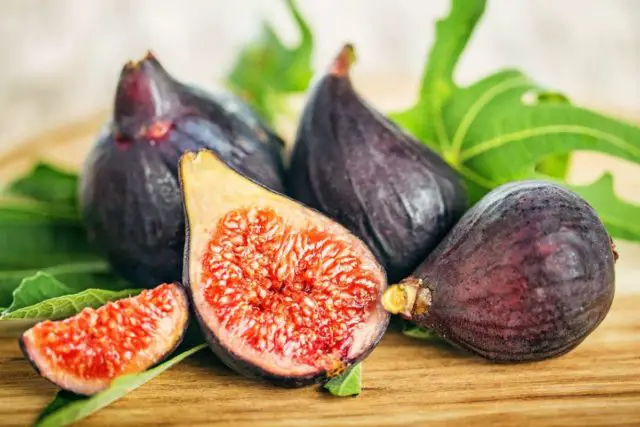
How many times it happens that we consume some food without knowing its origin, how they are made or what their properties are. Did you know that figs are not a frito? They are a flower and also that have dead insects inside!
How are figs formed?
Figs develop in a very particular way. The first fact is that technically they are not a fruit, but an infrutescence (a set of fruits). And the second is that they need an insect to reproduce that ends up dying inside it.
Simply explained, figs are a kind of inverted flowers that bloom inside that great dark pod with reddish tones that we know as the fig fruit.
Each of these flowers produces a single hard shell fruit and a single seed called “achene”. Therefore, the fig is made up of multiple achenes, which give it that characteristic crunchy texture.
But what is most striking, and for some disgusting, is that for the fruit to form, it is necessary for a special pollination process to occur that depends on an insect: the wasp.
These insects transport their genetic material that allow their reproduction. For their part, wasps could not live without figs, because they deposit their larvae inside the fruit. This relationship is known as symbiosis or mutualism.

How does that process take place?
The female wasp goes into the male fig, not to eat but to lay their eggs. The male fig has a special shape to house the wasp’s eggs inside. The incredible thing is that while it is introduced to the fig, the wasp generally loses its wings and antennae so it has no way to get out and will die in this fruitful coffin.
So then it’s up to the young to continue their cycle. Male wasp hatchlings are born without wings as their sole function is to procreate with female wasp hatchlings, technically with their sisters, and to tunnel out of the fig. Finally the female hatchlings emerge from the fig taking the pollen with them to continue this cycle in a new fig tree.
If a wasp accidentally enters a female fig, like the ones we eat, instead of a male fig, they do not have room to reproduce inside and since it will not be able to leave, it will die inside. A tragic but necessary consequence, because in this way the pollen is transported.
Wasps transform into protein!
Before you decide to stop eating figs, you should know that wasp bodies break down inside the fig thanks to the work of an enzyme in the fruit called fictina that transforms the insect into protein.
Currently most fig varieties for human consumption are parthenogenetic. This means that they always bear fruit in the absence of a pollinator.
What benefits does the fig provide to our health?
Figs are high Nutritious in fiber and a good source of several essential minerals, including magnesium, manganese, calcium (which promotes bone density), copper, potassium (which helps lower blood pressure), as well as vitamins, mainly the K and B6.
In addition to being preserved for much longer, the Nutritious value of figs increases when they are dried. A half cup of fresh figs, for example, gives much more calcium than a half cup of milk, but a single dried fig contains almost as much calcium as an egg. Whether fresh or dried, fig contains powerful antioxidants that neutralize free radicals and fight disease.
It is incredible how the fig through all this process can become an apparent fruit, thanks to the work done by wasps. Really interesting.

